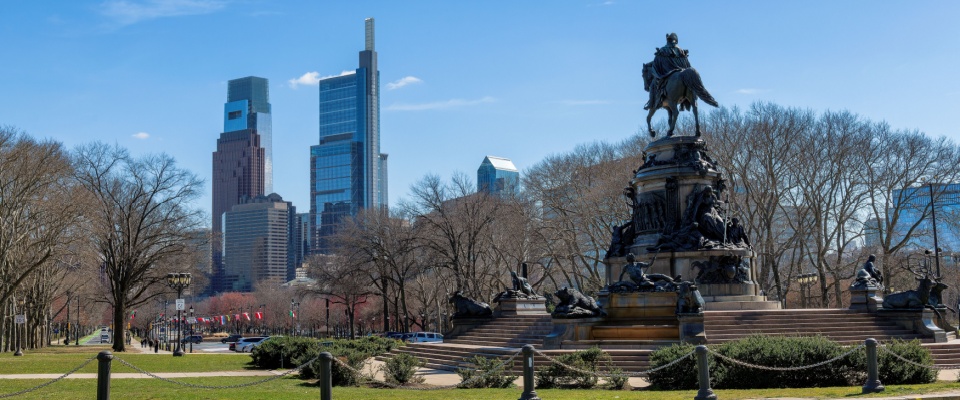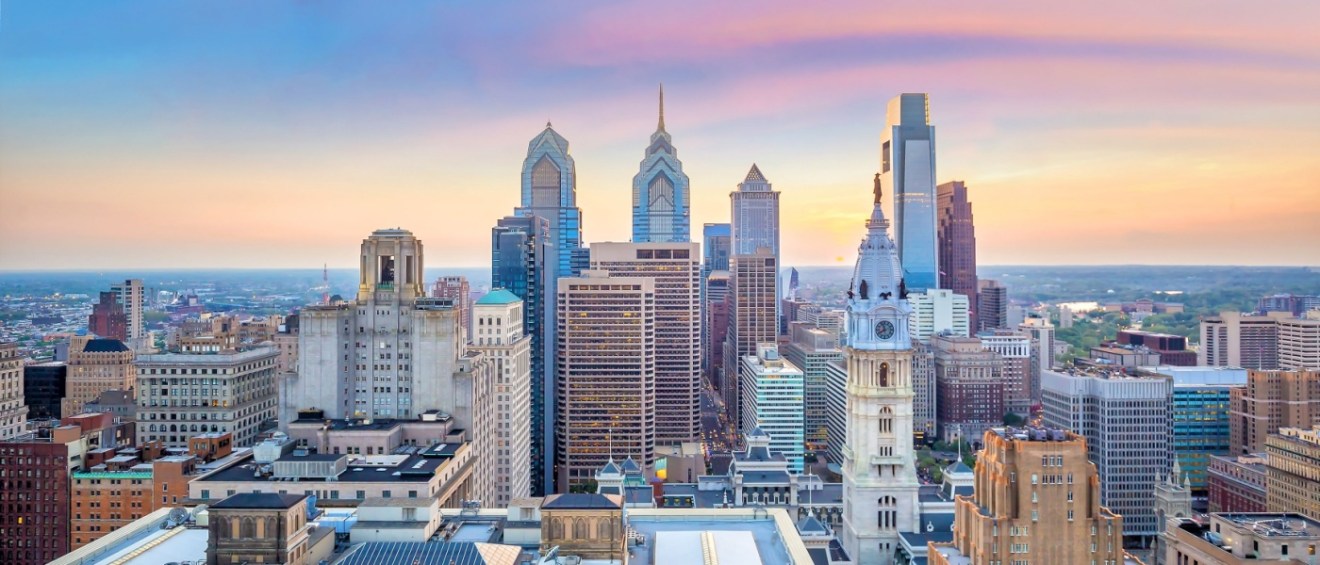Share this article:
Are you moving to Philadelphia? Whether you’re relocating for work, school, or a change of scenery, knowing what to expect financially can make all the difference. That’s why understanding the cost of living in Philadelphia is so important.
If you’re eyeing an apartment in Philadelphia as your next home, you should look beyond just rent. Expenses like food, healthcare, utilities, and transportation can vary quite a bit between cities and states.
This guide offers a breakdown of the average cost of living in Philadelphia compared to the rest of Pennsylvania and the U.S., so you can decide if Philly is a smart financial move for you.
What is the average cost of living in Philadelphia?
Renting in Philadelphia offers the experience of big-city life without some of the sky-high costs you’d find in places like New York City or San Francisco. But that doesn’t mean it’s cheap. The average cost of living in Philadelphia is 2% higher than the Pennsylvania average and 3% higher than the national average. So, renters can expect to spend a bit more than they might in other parts of the state or country.
The median household income in Philadelphia is $60,698 as of March 2025. While this provides a solid base for many renters, how far your money goes really depends on where and how you choose to live. Let’s break it down:
According to data from the Cost of Living Index published by C2ER and RentCafe.com’s Cost of Living Calculator, here’s how Philadelphia compares:
- Housing costs are 5% higher than the Pennsylvania average but 1% lower than the national average.
- Utilities cost about the same as the state average but are 6% higher than the national average.
- Food costs are 2% higher than the Pennsylvania average and 4% higher than the national average.
- Healthcare is 6% lower than the state average and 4% cheaper than the national average.
- Transportation is 1% lower than the Pennsylvania average but 5% higher than the U.S. average.
- Goods and services are 1% higher than the state average and 6% higher nationally.
When we compare cost of living categories, it’s clear that Philadelphia is a bit more expensive than the state and national averages. But living here balances out, with savings in healthcare and housing relative to other big U.S. cities.
Breaking down the cost of living in Philadelphia
Wondering what day-to-day costs look like? Here’s a category-by-category breakdown of the cost of living in Philadelphia to help renters understand what they might spend.
Housing (Buying and Renting)
- Average monthly rent: $1,996
- Average home price: $470,985
- Mortgage rate: 6.80%
Utilities
These are essential whether you rent or buy, and they include services like electricity and communication.
- Energy: $219.95 per month
- Phone: $201.51 per month
Food
From groceries to dining out, food is a major part of your budget. Here are some common grocery costs:
- Milk (1 gallon): $4.70
- Eggs (dozen): $3.48
- Loaf of bread: $3.92
- Potatoes: $4.83
- Cheese: $5.04
- Ground beef: $7.31
Healthcare
Whether it’s a doctor’s visit or an eye exam, healthcare expenses matter. Here’s what you can expect:
- Doctor’s visit: $148.84
- Dentist: $111.61
- Optometrist: $125.00
Transportation
Fuel and car maintenance are key costs for anyone who drives in the city.
- Gasoline (per gallon): $3.33
- Tire balancing: $73.75
Goods & Services
Clothing, grooming, and fun activities make up this category.
- Men’s shirt: $36.90
- Women’s slacks: $38.66
- Boy’s jeans: $29.27
- Haircut: $32.40
- Beauty salon: $67.25
- Dry cleaning: $13.50
- Movie ticket: $14.90
These details give you a clear picture of the average cost of living in Philadelphia in 2025. While some categories are more expensive than others, they paint a realistic image of everyday expenses.
Is Philadelphia a good choice for renters?
So, is Philly worth it? If you’re looking for a city with a rich history, diverse neighborhoods, and solid job opportunities, this Northeastern city is worth considering. While the cost of living in Philadelphia is slightly above the state and national averages, it’s more affordable than many other major East Coast cities.
The slightly higher cost of living in Pennsylvania’s largest city can be offset by lower healthcare costs and moderately priced housing. Plus, you’ll get access to all the cultural and career benefits of urban life. If you’re considering moving to multiple cities and trying to compare the cost of living across the country, Philadelphia offers a well-balanced mix of expenses and amenities.
For renters ready to make the move, this city provides an urban experience with a manageable budget. Take the time to explore your apartment options, consider your lifestyle needs, and plan your budget accordingly. When you’re well-prepared, living in Philadelphia can be a budget-friendly and fulfilling choice.
Understanding each cost category will help you make a smarter rental decision and ease your transition to the City of Brotherly Love. If you’re looking for apartments for rent in Philadelphia, knowing what to expect financially will help you start your new chapter on the right foot.
If you’re interested in the cost of living in other cities, browse our guides for Brooklyn; Joliet, IL, Orlando, FL; and Seattle.
Share this article:
Alexandra Both is a senior real estate writer and research analyst with RentCafe. She brings over almost 10 years of real estate writing experience, having served as a senior editor at Commercial Property Executive and Multi-Housing News. A seasoned journalist, Alexandra has worked across print, online, and broadcast media. Her work has been featured in a variety of prominent outlets, including The New York Times, The Guardian, USA Today, and Architectural Digest. She holds a B.A. in Journalism and an M.A. in Community Development.
The Ready Renter has your back
Tips, news, and research curated for renters, straight to your inbox.




Related posts
Subscribe to
The Ready Renter newsletter








